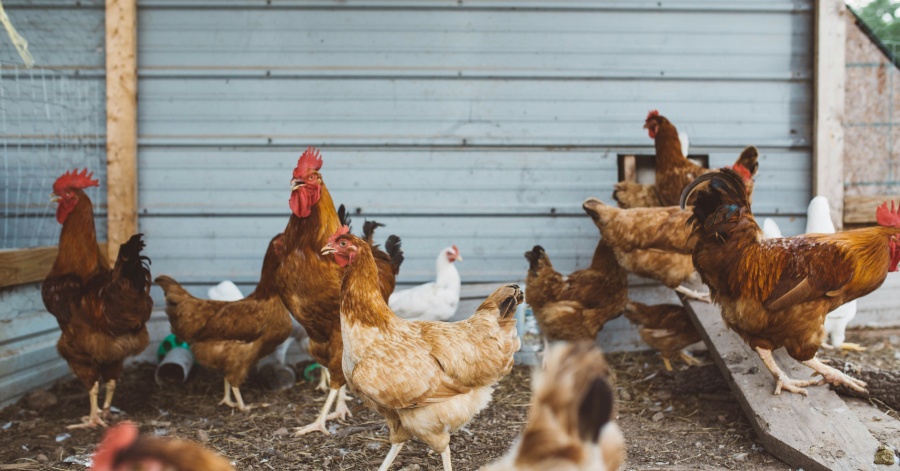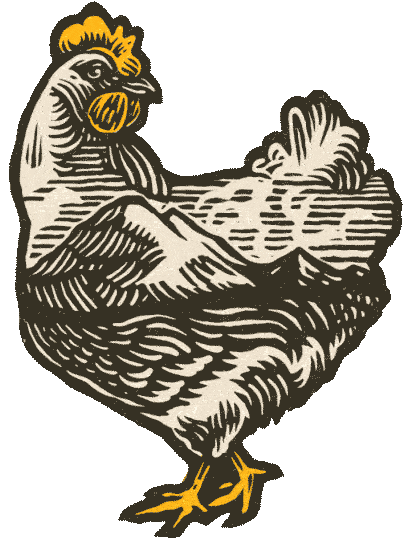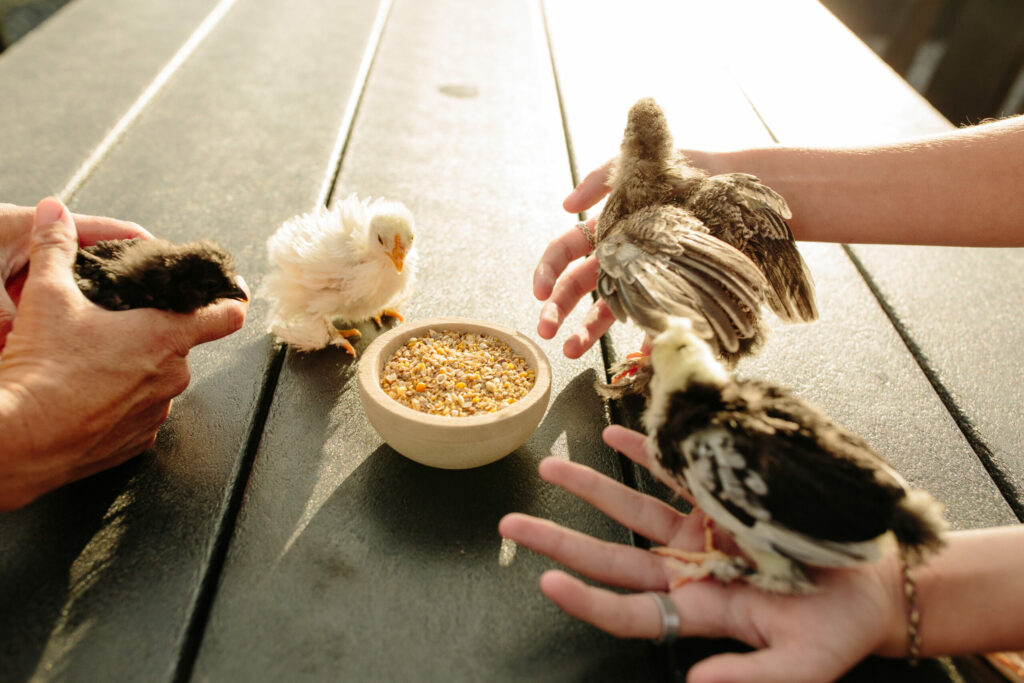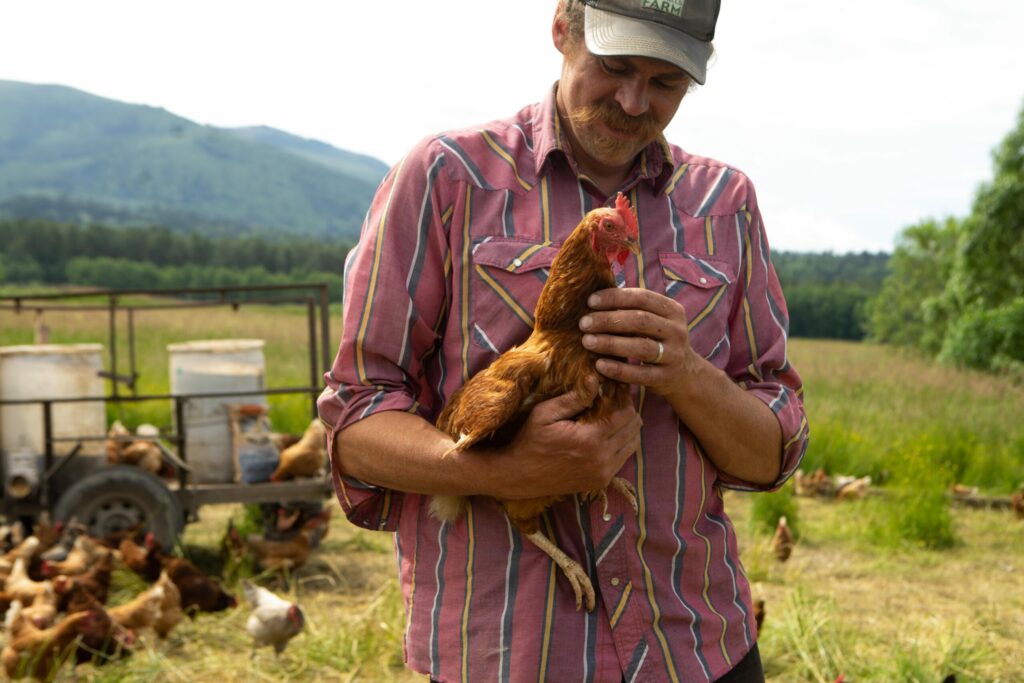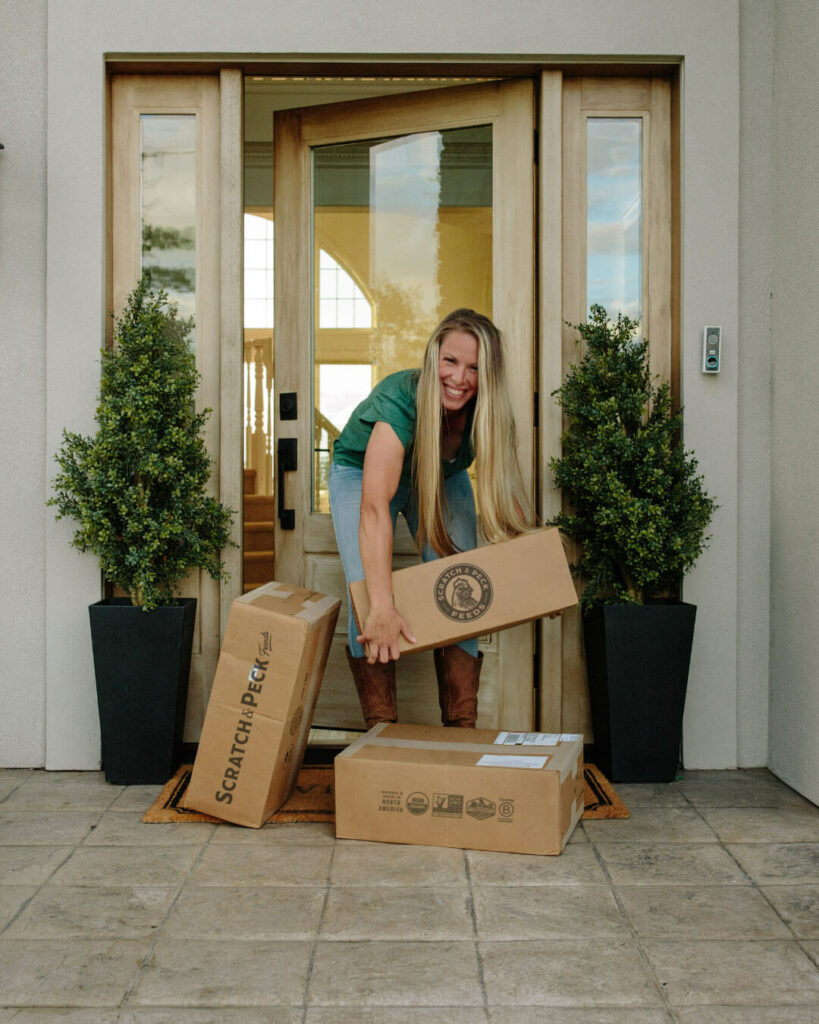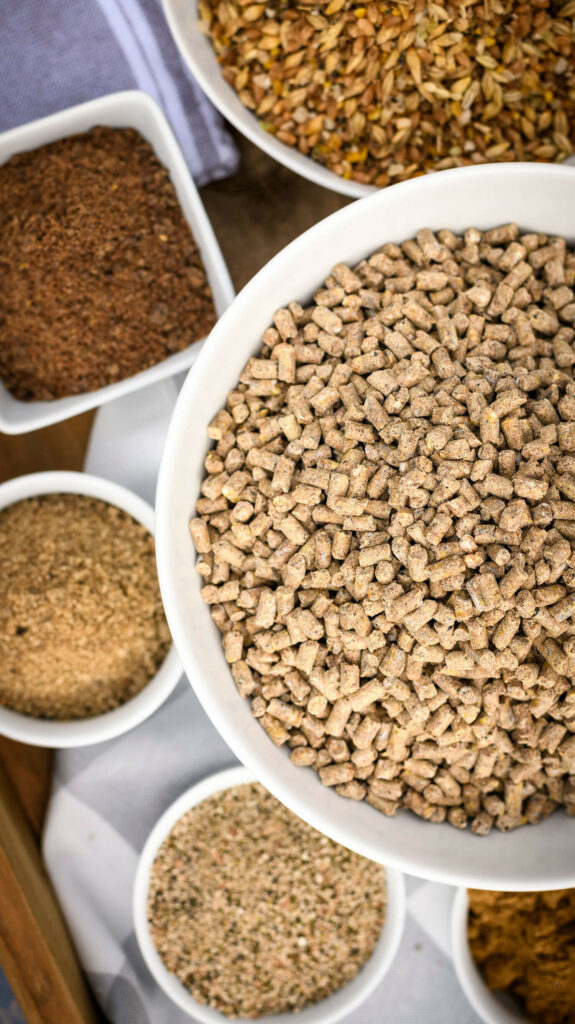What Is Chicken Bedding and Why It Matters
Chicken bedding is the material used to cover the floor of a chicken coop or run. It serves several important functions beyond just providing a place to walk.
Although the name itself is bedding, the chickens will most likely sleep on their roosts in the coop above the bedding instinctually. Chickens continue to pass droppings at night, and they’ll fall onto the bedding while they sleep.
Good bedding will:
- Absorb moisture
- Helping keep the coop dry is important for their respiratory system, and to avoid moisture build up while sleeping. As chickens sleep and expel moisture it can cling to them, leading to a dewy environment.
- Controls odors
- A buildup of ammonia in a coop can be dangerous to chickens, leading to eye irritation and respiratory issues. Proper ventilation along with bedding can help reduce the risk.
- Adds insulation
- Think of how your house has insulation in the walls, the bedding insulates the bottom of your coop.
- Promotes hygiene
- By providing a layer of bedding underneath the roost, droppings absorb into them instead of sitting wet on the coop floor. Clean up becomes quicker and more convenient along with lessening the likelihood that chickens track through the poop.
- Enhances comfort
- When chickens feel safe in their coop at night, they have a better sense of well-being overall. Happy chickens = happy eggs!
Using poor-quality bedding can lead to serious health issues. Damp, dirty bedding fosters mites, bacteria, and fungi, while dusty or fragrant materials (like cedar) can cause respiratory problems.
It might feel overwhelming at first, but once you find the bedding that best fits your chicken needs, you’ll know.
Key Factors to Consider When Choosing Bedding
Absorbency
Wet bedding leads to odor and disease. Look for materials that soak up moisture efficiently to keep your coop dry.
Dust Levels
High-dust materials can irritate chicken lungs (and yours). Always opt for low-dust options, especially for indoor coops or baby chicks.
Sand can be a dusty bedding choice, always look for a sand that advertises being low dust or extra filtered. It’s worth nothing that sand that has these properties usually comes at a higher price point.
Cost-Effectiveness
Consider the upfront cost vs. how long the bedding lasts. Some materials require more frequent replacement, increasing long-term costs. Consider the time you can commit to changing out your chickens bedding.
A higher cost bedding material might be worth it in the long run if it needs to be changed less often and ensures flock health isn’t compromised.
Compostability and Eco-Friendliness
Many bedding types can be composted into rich fertilizer. The droppings of chickens are rich in nitrogen Choose compostable options if you’re eco-conscious or garden-savvy.
If creating a compost pile in your backyard isn’t possible, check with your city to see if they offer commercial composting as an option. Different bedding types will break down at different rates.
Season/Climate Suitability
What is the climate you live in? Is it more on the humid side? Drier? This will help determine what type of chicken bedding will best fit your coop environment and absorbency needs. Different materials perform better in different climates.
For example, straw is great for cold weather, while sand excels in the heat. A chicken owner in Washington state will have better use out of a material like hemp, while a Florida farmer might prefer sand.
Best Bedding for Chickens: Full Comparison Table
| Material | Cost | Compostability | Ideal Climate | Maintenance Needs |
| Straw | Low | High | Cold | Moderate |
| Sand | Medium | Low | Hot | High (daily spot cleaning) |
| Wood Shavings | Medium | High | All | Low |
| Hemp | High | High | All | Low |
| Cardboard | Low | Medium | Mild | Medium |
Top Bedding Materials for Chicken Coops (Pros & Cons)
Straw
Pros
Straw is an affordable, insulative, compostable, and widely available at feed stores. Its dust level is low and it’s easily spreadable.
Make sure you purchase straw, and not hay. Which can harbor bacteria and moisture, countering any benefits. Chickens might try to eat hay as well, leading to digestion issues such as impacted crop.
Cons
Straw can harbor mites if not changed regularly. Like hay, straw can harbor mold when not managed properly with regular replacement and proper ventilation in place.
Straw can be wieldy to handle, and is best stored in a truck bed to avoid sticking to vehicle fabric.
Wood Shavings (Pine, Aspen)
Pros
Wood shavings provide great odor control, can be naturally antibacterial (pine), and widely available at stores like Tractor Supply Co. or your local feed store.
Shavings are soft and usually come compressed and sealed in plastic, making getting them home easier and less mess.
Cons
Shavings can be slightly privier than straw. And you must avoid using cedar shaving—read below why!
⚠️ Why You Should Never Use Cedar Shavings in a Chicken Coop
While wood shavings are generally a great choice for chicken bedding, cedar shavings are dangerous and should never be used.
Cedar wood contains aromatic oils (phenols) that give it a strong scent. These natural compounds are toxic to chickens and can lead to serious health issues.
When used in an enclosed space like a coop, cedar fumes can:
- Irritate the respiratory system
- Cause chronic lung problems
- Stress the flock
- Reduce egg production
Young chicks are especially at risk, as their developing respiratory systems are highly sensitive.
What to use instead: Stick with pine which is a safe, absorbent, and odor-controlling option.
Quick Chicken Tip: Always look for bags labeled “kiln-dried pine” or ask your supplier to confirm the wood type if you’re receiving chips from a service like chip drop.
Sources:
- Why you should NEVER use cedar bedding in your chicken coop
- Things That Are Toxic To Chickens – The Open Sanctuary Project
Sand
Pros
Sand as a form of bedding can provide excellent odor control, dries the droppings out fairly quickly, is reusable, and easily sourced.
Sand can be maintained like kitty litter with regular scooping leading to only having to change the sand a few times a year.
Cons
The weight of sand can be heavy to handle if you have lifting restrictions and take up a lot of space in colder months when storing indoors. This bedding type will not break down in a compost and cannot be disposed of in municipal trash. It can be cleaned and reused, which can be quite the project.
Not all types of sand can be used in a chicken’s home. Construction grade (also known as all-purpose sand) is ideal with its coarseness and its ability to drain.
Play sand cannot be used as it poses a major risk to chicken’s health due to dust and risk of ingestion.
Hemp
Pros
Hemp is highly absorbent, provides great odor control, is completely compostable, and has a soft texture. It can easily be found at most pet and feed stores.
Hemp works well in the chicken coop and the chick brooder as well. This option is usually less dusty than others and is lightweight for carrying.
A little goes a long way! Hemp can cover a lot of sq footage with less than you expect.
Cons
Hemp can be one of the pricier bedding options available. If it’s left too long in the coop it can become moldy or mildewy like some of the other bedding options.
Recommended Brand: Eaton Pet & Pasture Hemp Bedding
Paper Feed bags
Pros
If you’re already purchasing chicken feed in kraft paper bags (psssssst that’s what ours is in!) and not reusing it, you’re missing out! Cheap, soft, compostable, and low dust makes this option affordable and attainable.
Cut open your feed bags to double the coverage area possible and lay them down under the roosts. Clean up is as simple as folding the bag in half, sliding the bag out and adding it to your compost pile.
Cons
Since paper feed bags are thin and not that absorbent, they will need to be changed frequently. It can also be hard to find the feed you prefer and find it carried in a compostable bag.
Many companies use feed bags that are coated in printable plastic that cannot be composted. If left for too long the bag will break down and could become a slipping hazard.
Specialized Bedding Options: What Works Best for Each Situation
Best Bedding for Baby Chicks
Baby chicks are still learning how to use their legs in the early days. Use soft, warm, and low-dust materials like large pine shavings. Avoid slippery surfaces (like newspapers) that can cause leg injuries. Whatever your choice you must make sure it’s not small enough for them to ingest.
Best Bedding for Odor Control
Hemp, sand, and kiln-dried pine shavings are all excellent options to combat odor in the coop.
Best Bedding for Winter
Straw and pine shavings offer insulation and comfort. Consider the deep litter method to build warmth and reduce your bedding cleanout frequency.
Best Budget-Friendly Bedding
Empty feed bags and straw are cost effective bedding options.
Best Bedding for Composting
Straw, hemp, and pine shavings break down easily and contribute to rich, fertile compost.
What Is the Deep Litter Method? (And Should You Use It?)
Deep litter method is an approach where the soiled bedding is left, and fresh layers are added on top regularly to build a self-contained composting system.
This no-smell method can be used in coops with good ventilation and in colder climates. It creates warmth while composting.
Pros
Composting bedding generates heat for winter helping keep your feathered friends warm and cozy. Cleanout usually happens once or twice a year, that’s it!
Greatly cutting down on chicken chore time while creating rich soil for your garden is a win-win. Chickens help turn over their bedding when they scratch and kick through it.
Cons
Needs regular stirring and monitoring to ensure correct composition to avoid issues like an ammonia build up. If done incorrectly, the smell can be overwhelming and become a packed down mess. Not ideal for hot/humid climates.
How to Do The Deep Litter Method
- Start with 4–6 inches of dry bedding (like pine shavings or hemp) sprinkle them on the floor of the coop below roost bars laying down a healthy layer.
- Stir and turn over the bedding weekly to prevent caking with a stick, rake, or shovel. Make sure to break up any parts that are starting to stick together. Remove any clumps that are hard from the pile.
- Add fresh bedding every week on top of the freshly turned pile. The older bedding will decompose and sink down over time leaving room on top for the new bedding.
- Replace the whole pile 1–2 times per year by shoveling it out to reveal your beautiful new soil!
Tips to Maintain and Change Chicken Bedding Effectively
Change frequency:
- Straw: every 1–2 weeks if kept dry. If it gets wet in between maintenance, change out immediately.
- Sand: spot clean daily by raking and filtering, deep clean monthly
- Wood shavings/hemp: monthly or as needed when smell becomes noticeable.
Signs it’s time to change bedding: Any strong odor, damp spots, visible waste piles, flies or mites present in the bedding mean it’s time for a deep clean.
Optional supplemental tools: Use garden lime or food grade diatomaceous earth (DE) to reduce odors and kill mites if an infestation occurs. The deep litter method will have to be restarted if an infestation happens. Make sure to follow all DE guidelines provided on the bag.
- Recommended Lime Brand: Eaton Pet & Pasture Revitalime
- Recommended DE Brand: Harris DE
- Depth:
- Standard bedding cleaned out weekly: 2–4 inches
- Deep litter cleaned out once or twice a year: 6+ inches
Chicken Bedding FAQs
What is the best bedding for chickens in winter?
Straw, pine shavings, or the deep litter method will work well to retain heat in winter or a colder climate.
What bedding keeps chickens cleanest?
Hemp and sand are top picks thanks to their odor control and absorbency. Their ease of cleaning and maintenance can counter the higher price tag.
Can I use shredded paper or leaves?
No, we do not recommend using shredded paper or leaves. Both do not absorb moisture well and can pose a slipping hazard for chickens. They would require daily changing and add time to chicken chores.
How often should I change chicken coop bedding?
It depends on the material, but weekly to monthly is typical. Spot clean daily if using sand.
Is sand a good bedding option for chickens?
Yes, sand is a good bedding option. Especially in hot climates. It drains well and reduces odor but is heavy and not compostable. If sand is the choice you go with, look for construction grade sand and a low dust option for your chicken’s respiratory health.
Final Thoughts: Choosing the Right Bedding for Your Coop
There’s no one-size-fits-all solution. Your budget, climate, coop design, and composting goals will all influence your decision on the ideal bedding type.
Try different materials and observe what works best for your flock. Your chickens will let you know when they’re comfortable!
